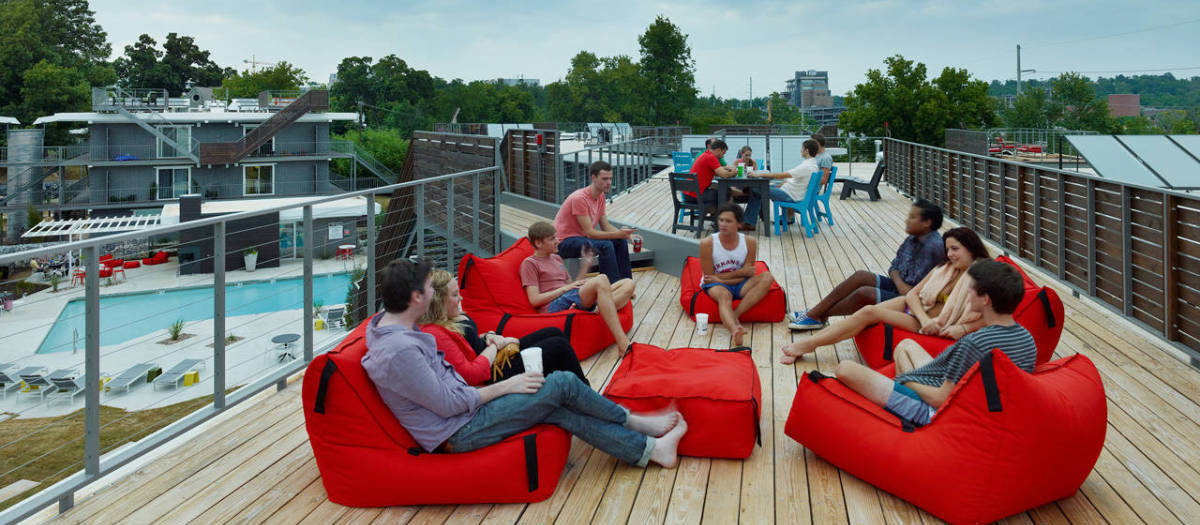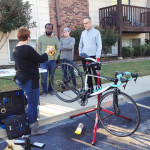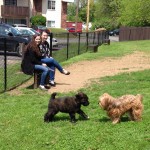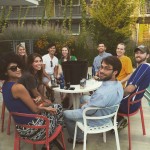
Building Healthy Places with Connectedness
It turns out that getting together isn’t just fun – it has positive implications for wellness, too. Continuing our series on the Urban Land Institute’s Building Healthy Places initiative, we highlight the ways that design and programming can give neighbors opportunities to interact. The renovation of Eco Modern Flats carved gathering spaces from previously gloomy slopes and created a new public rooftop deck to encourage neighbors to gather. Taking cues from Eco, our mixed-use project now under construction in Uptown Fayetteville incorporates walkable streetscapes, a large green roof, and several outdoor gathering spaces throughout the property.
At the properties we manage, programs like cookouts, outdoor movies, and happy hours give residents a chance to relax and connect. Willow Park Apartments and North Creekside Apartments host popular cookouts in the summer and service projects and bike outings all year long. Neighbors at Eco Modern Flats just hosted a progressive dinner, with appetizers served in one apartment, the main course in another, and dessert in a third (we hear the pumpkin whoopie pies were delicious!).
Thoughtful developers and property managers can be intentional about creating spaces and programs that foster connectedness – another way that our built environment can promote good health.
- We partnered with Bike Fayetteville to host a bike workshop and group ride
- Neighbors and their dogs love spending time at North Creekside’s dog park
- Friday Happy Hours are a popular event at Eco Modern Flats
This spring, Urban Land Institute released the Building Healthy Places Toolkit, exploring 21 evidence-based recommendations for improving public health through land use practices. This series highlights the Building Healthy Places recommendations, examining our current properties and practices, and identifying ways that we can push ourselves to create more healthy communities.
Building Healthy Places Recommendation #20 Facilitate Social Engagement
COMMUNITY ENGAGEMENT is an important factor in creating safe, happy, and healthy places. Bringing people together in social settings can improve mental and physical health. Health benefits from social interaction include reduced risks for health issues such as depression, high blood pressure, and cardiovascular problems. Positive social interactions can be facilitated by the physical environment—for example, through well-designed public parks and plazas, community rooms, and rooftop spaces. Programs and events are good strategies for strengthening community identity, increasing social interaction, and supporting a variety of goals related to health and well-being. Focusing on intergenerational interactions can also support well-being.
—Building Healthy Places Toolkit: Strategies for Enhancing Health in the Built Environment, Urban Land Institute, 2015




